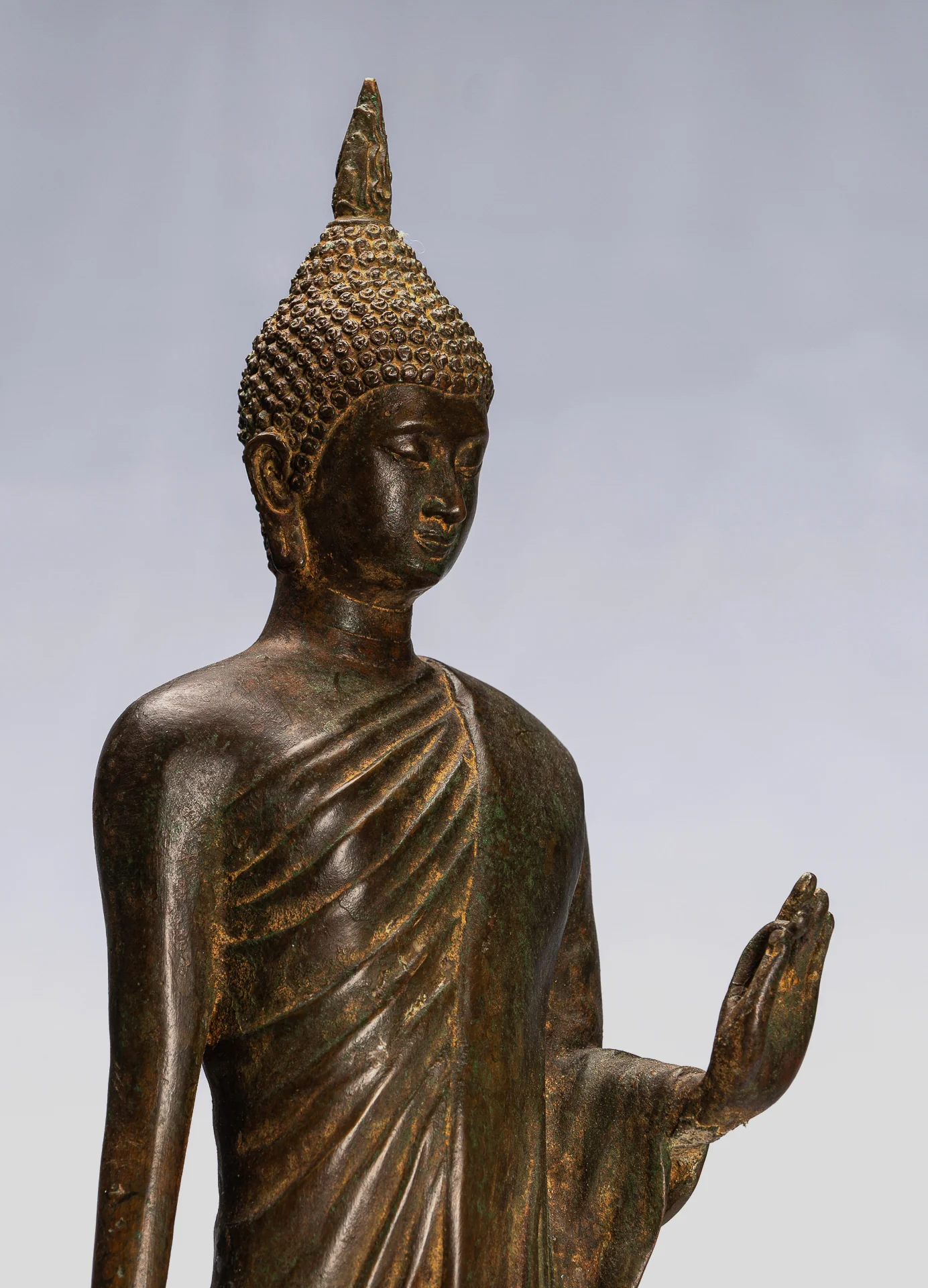
How do I choose a Buddha statue?
By Amy Underdown, London, UK
Having a Buddha statue in the home has helped meditators since time immemorial. Through the ages, people have used Buddha statues to help channel their spirituality and bring a positive aura into their space. If you are looking to buy a Buddha statue, there are therefore different aspects to consider before making that final purchase.
Ultimately, you want to ensure that the Buddha statue is the best fit for you as an individual. There are many types of Buddha statue which can assist with different facets of life. These differences are communicated through two key criteria: the position of the body and the way in which the Buddha holds his hands, which is also known as the mudra.
When it comes to the body position, it can be as simple as the Buddha being seated, standing or reclining. But there are also more specific details, such as the way his legs overlap. The meanings behind the mudra are slightly more intricate, with the positioning of fingers, palms and arms all communicating a deeper message. This is important to understand when buying a Buddha statue, as to truly resonate with the Buddha statue we must first learn what it can help us with.
Take the Meditation Buddha, for example. Whilst the name of this Buddha does make it fairly self-explanatory, the intricacy of its positionings is fascinating. The lotus pose of the Meditation Buddha is immediately recognisable as a symbol of a meditative state, but the balance and tranquillity of the statue are further communicated by its triangular silhouette, as well as the half or fully closed eyes of the Buddha. The Meditation Buddha features the Dhyana mudra, which sees both hands placed in the lap facing upwards, with the right hand resting on the palm of the left. The top of the thumbs touch in order to form another triangle shape. This geometry is a recognisable symbol in Buddhism, with the triangle representing the unity of the triple gem: the Buddha, Dharma and the Sangha, as well as holding a mystic fire within.
The detail of these meanings is key, as it is all about which statue you resonate with personally.
We have a detailed explanation of each of the meanings behind the Buddha’s different positions here, but there is a shortened list below to see if any pique your interest.
Teaching Buddha – Cross-legged, Dharmachakra mudra – for those who wish to focus on their spirituality
Laughing Buddha – Actually represents Budai, rather than Buddha – for happiness and prosperity
Meditation Buddha – Double or single lotus pose, Dhyana mudra – for focusing on meditation
Reclining Buddha – Lying down on his right side – those seeking to reach inner harmony
Medicine Buddha – Seated, holding medicinal herbs – for those seeking good health and wellbeing
Calling the Earth to Witness Buddha – Bhumiparsha mudra – representing the moment of enlightenment
Walking Buddha – Walking in motion – encourages the recognition of internal beauty and grace
Sitting Buddha – Virasana, Vajrasana or Pralambanasana – varying intentions, from generosity to meditation
Gift-giving/Varada Buddha – Standing – for generosity
Protection/Abhava Buddha – Standing – for protection and fearlessness
These varying meanings are what you should seek to understand when looking to buy a Buddha statue. Be it for yourself or someone else (as gift-giving is also intrinsic to the Buddhist philosophy), understanding which statue is the best fit for you will mean you can truly nurture your spirituality and resolve.


